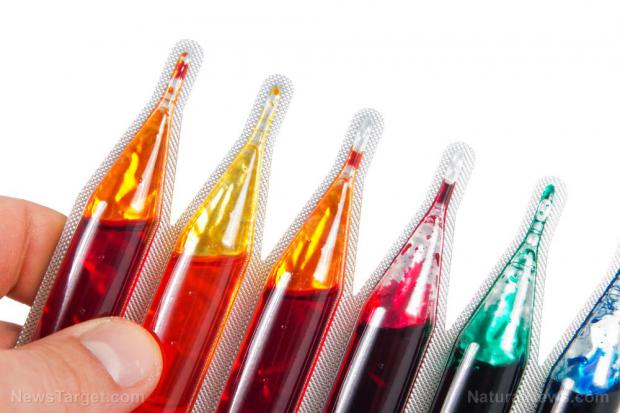
Breaking News
 This Is The Most Energy-Rich Molecule In The World
This Is The Most Energy-Rich Molecule In The World
 Jimmy Dore Compares Trump's Endorsement of Overthrowing Libya to His Actions in Venezuela
Jimmy Dore Compares Trump's Endorsement of Overthrowing Libya to His Actions in Venezuela
 Pfizer mRNA Found in Over 88% of Human Placentas, Sperm, and Blood -- and in 50% of Unvaccinated...
Pfizer mRNA Found in Over 88% of Human Placentas, Sperm, and Blood -- and in 50% of Unvaccinated...
Top Tech News
 Build a Greenhouse HEATER that Lasts 10-15 DAYS!
Build a Greenhouse HEATER that Lasts 10-15 DAYS!
 Look at the genius idea he came up with using this tank that nobody wanted
Look at the genius idea he came up with using this tank that nobody wanted
 Latest Comet 3I Atlas Anomolies Like the Impossible 600,000 Mile Long Sunward Tail
Latest Comet 3I Atlas Anomolies Like the Impossible 600,000 Mile Long Sunward Tail
 Tesla Just Opened Its Biggest Supercharger Station Ever--And It's Powered By Solar And Batteries
Tesla Just Opened Its Biggest Supercharger Station Ever--And It's Powered By Solar And Batteries
 Your body already knows how to regrow limbs. We just haven't figured out how to turn it on yet.
Your body already knows how to regrow limbs. We just haven't figured out how to turn it on yet.
 We've wiretapped the gut-brain hotline to decode signals driving disease
We've wiretapped the gut-brain hotline to decode signals driving disease
 3D-printable concrete alternative hardens in three days, not four weeks
3D-printable concrete alternative hardens in three days, not four weeks
 Could satellite-beaming planes and airships make SpaceX's Starlink obsolete?
Could satellite-beaming planes and airships make SpaceX's Starlink obsolete?
INVASION of the TOXIC FOOD DYES:

Synthetic food dyes — ubiquitous in brightly colored candies, cereals, and snacks — are facing heightened scrutiny as research links them to cancer and behavioral disorders in children. Nearly 1 in 5 packaged foods in the U.S. contains these additives, with products marketed to kids using them three times more frequently than others, according to public health advocates.
• Widespread Use in Kids' Products: Nearly 1 in 5 packaged foods in the U.S. contain synthetic dyes, with products marketed to children (like candy, cereals, and sports drinks) using them at three times the rate of other foods.
• Cancer and Behavioral Risks: Three major dyes — Red 40, Yellow 5, and Yellow 6 — are linked to cancer (per the CSPI) and studies tie them to hyperactivity and ADHD in children, prompting bans in California and the EU.
• Synergy with Sugar: Foods with artificial dyes contain 141% more sugar on average, suggesting manufacturers use bright colors to make sugary, less nutritious products more appealing to kids.
• Regulatory Shifts: While California has banned Red 3 and six other dyes in school foods, the FDA plans a nationwide ban by 2027, and some companies (like Nestlé) already avoid synthetic dyes entirely—proving safer alternatives exist.
Food dyes under fire: cancer, hyperactivity and regulatory pushback
Amid growing pressure, California and the European Union have already banned certain dyes, while the U.S. Food and Drug Administration (FDA) plans nationwide restrictions by 2027. But with companies like Nestlé proving natural alternatives are viable, critics question why change isn't happening faster.

 Really good questions...
Really good questions... First totally synthetic human brain model has been realized
First totally synthetic human brain model has been realized Mach-23 potato gun to shoot satellites into space
Mach-23 potato gun to shoot satellites into space

